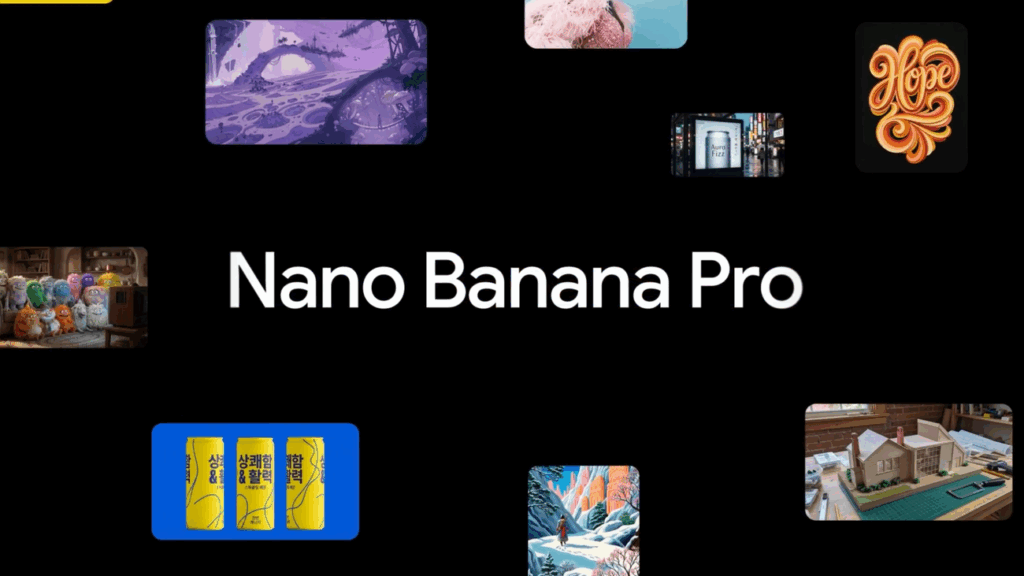Ever since AI image generators became popular, creators have been facing the same problem. These tools often act like talented but unpredictable collaborators, impressive when they work and frustrating when they don’t. Users wanted more than pretty photos. They wanted reliability, repeatability, and true creative control. Google’s newly released Nano Banana Pro is an upgrade to the previous Nano Banana model and aims to offer just that.
Built on Gemini 3, Nano Banana Pro focuses on practical improvements rather than spectacle. Image resolutions have jumped from the old 1024 pixel limit into the 2K and 4K realms, and text remains legible, complies with multiple fonts, and works across languages. Users have direct control over lighting, focus, camera angle, color tone, and depth of field, giving you the tools designers and photographers use every day. On top of that, models can incorporate up to six high-fidelity reference shots, blend up to 14 individual objects within a single image, and maintain consistency for up to five people, making it much easier to reliably generate complex scenes and characters. Google has also released a demo app so users can test these features firsthand.
Google unveils Gemini 3 with better inference, conversational search, and AI agents
Coming on the heels of ChatGPT 5.1, Grok 4.1, and Claude Sonnet 4.5, Google’s Gemini 3 promises a sharper, more capable model built for real, everyday use.

The Nano Banana Pro also moves towards what Google has been building for years. Combine search and creation into one workflow. You can ask it to pull information from the web, such as recipes or reference images, and use that material directly in whatever you produce. Creating images becomes part of a broader task rather than an independent experiment.
Improvements come with trade-offs. Rendering images takes longer and costs more than three times as much as the original Nano Banana model. Google seems happy with that, and this version is structured for people who prioritize accuracy over quick drafts. A 1080p or 2K image now costs $0.139 and a 4K image costs $0.24, compared to $0.039 per 1024-pixel image in the original model. Google positions Nano Banana Pro for users who prioritize accuracy and consistency over quick drafts.
Access to models is integrated across Google’s ecosystem. The Gemini app defaults to Nano Banana Pro for all users until free users reach the generation limit, while paid subscribers enjoy higher limits. This model is also available in NotebookLM, Workspace tools like Slides and Vids, and Google’s new Antigravity IDE, so creators can use the upgraded model wherever they work.
Google is also working on image authentication. Now that SynthID is part of the Gemini app, anyone can upload an image and see if it was created or modified by Google’s model. The watermark remains on for free users, but turns off for Ultra subscription tiers. Support for C2PA content credentials is coming soon. This points to a world where validating AI content will be as important as creating it.
Google open sources AI text watermarking technology SynthID for AI detection
In the future, we can expect further improvements in AI text detection.

All of this is unfolding against the backdrop of the conflict between Google and OpenAI. Gemini has a massive user base of over 650 million monthly active users, and its AI overview feature is used by 2 billion people every month. OpenAI also remains dominant, with ChatGPT attracting around 800 million active users each week. The Nano Banana Pro enters that world not as a flashy stunt, but as a tool built for people who value consistency and control.
AI image generators are moving from novelty to something closer to actual creative software. Nano Banana Pro leans heavily into that change, giving creators what they were looking for: reliable tools that actually work, not magic.
Google releases Gemini’s AI image editor “Nano Banana”
It helps you transform your photos with simple prompts while keeping the look intact.

November 21, 2025
Link copied!
Copy failed!



